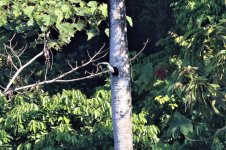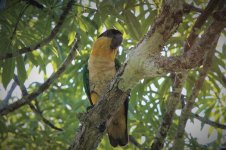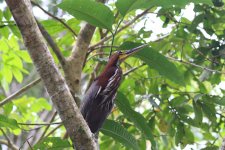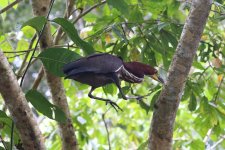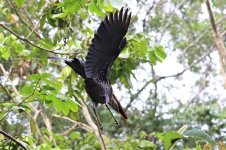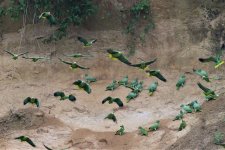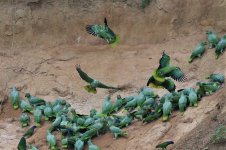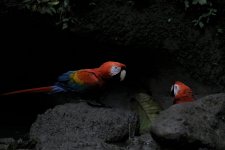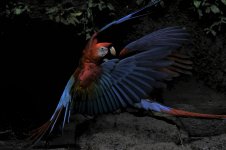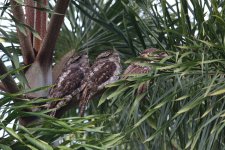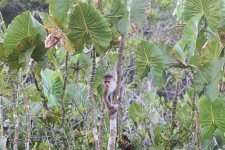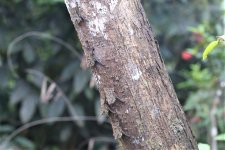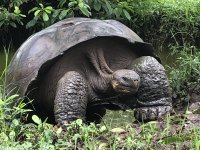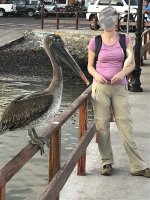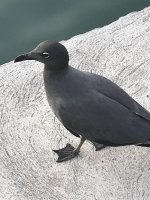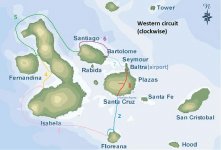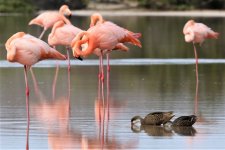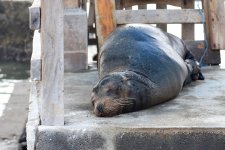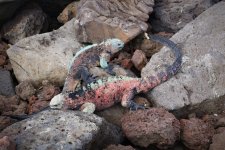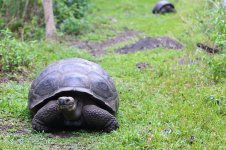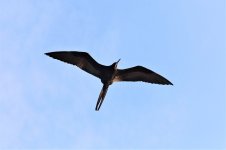Matt Bell
Well-known member
8 January (morning)
It was an early start to what promised to be a top day’s birding. The lodge was noisy with birdlife: the caciques, Russet-backed Oropendola and Smooth-billed ani. Our morning’s entertainment was to be atop a tower in the forest canopy. We canoed across the lake, surrounded by White-winged Swallow and glimpsing a Rufescent Tiger-heron in one of the narrow channels. From the far side of the lake we marched through the forest for half an hour: not much to see, just a shy Snail Kite and an even shyer Great Tinamou that scarpered before we got a good look at it.
The tower, beside a huge capoc tree, was a daunting 30 meter climb, but the reward — well, sitting up above the canopy by 09:00 was quite something! Over the next two hours the birds just carried on coming. Beautiful, charismatic birds, some at close quarters, some screeching past (parrots), others perched in the distance or poking their heads out of nest-holes in the tree trunks.
As a South American newbie (previously the closest I’d been to South America was Tobago) it was a dream. The first to show were the russet-backed and Green Oropendola, which were nesting nearby. Also in the nearby trees were Black-headed Parrot (see pic). A White-throated Toucan was nesting in a tree hole about 100m away (see pic). The joy of seeing my first ever toucan was compounded by Many-banded Araçari and Ivory-billed Araçari. Yellow-tufted Woodpecker showed briefly. Occasional flights of parrots whisked past: Bronze-winged Parrot and Blue-and-yellow Macaw. Other colourful sightings were: the vivid blue Spangled Cotinga with its red throat, the lime-yellow and green Gilded Barbet, the green, yellow and blue Green-backed Trogon and the red, yellow and black Wire-tailed Manakin. The hawks were of course comparatively sober in appearance, though no less engaging: Roadside Hawk, Crane Hawk and the rather stunning White Hawk. The tower session was rounded off with Neotropical Palm-swift, Black-billed cuckoo and the spooky Bare-necked Fruitcrow.
It was an early start to what promised to be a top day’s birding. The lodge was noisy with birdlife: the caciques, Russet-backed Oropendola and Smooth-billed ani. Our morning’s entertainment was to be atop a tower in the forest canopy. We canoed across the lake, surrounded by White-winged Swallow and glimpsing a Rufescent Tiger-heron in one of the narrow channels. From the far side of the lake we marched through the forest for half an hour: not much to see, just a shy Snail Kite and an even shyer Great Tinamou that scarpered before we got a good look at it.
The tower, beside a huge capoc tree, was a daunting 30 meter climb, but the reward — well, sitting up above the canopy by 09:00 was quite something! Over the next two hours the birds just carried on coming. Beautiful, charismatic birds, some at close quarters, some screeching past (parrots), others perched in the distance or poking their heads out of nest-holes in the tree trunks.
As a South American newbie (previously the closest I’d been to South America was Tobago) it was a dream. The first to show were the russet-backed and Green Oropendola, which were nesting nearby. Also in the nearby trees were Black-headed Parrot (see pic). A White-throated Toucan was nesting in a tree hole about 100m away (see pic). The joy of seeing my first ever toucan was compounded by Many-banded Araçari and Ivory-billed Araçari. Yellow-tufted Woodpecker showed briefly. Occasional flights of parrots whisked past: Bronze-winged Parrot and Blue-and-yellow Macaw. Other colourful sightings were: the vivid blue Spangled Cotinga with its red throat, the lime-yellow and green Gilded Barbet, the green, yellow and blue Green-backed Trogon and the red, yellow and black Wire-tailed Manakin. The hawks were of course comparatively sober in appearance, though no less engaging: Roadside Hawk, Crane Hawk and the rather stunning White Hawk. The tower session was rounded off with Neotropical Palm-swift, Black-billed cuckoo and the spooky Bare-necked Fruitcrow.




